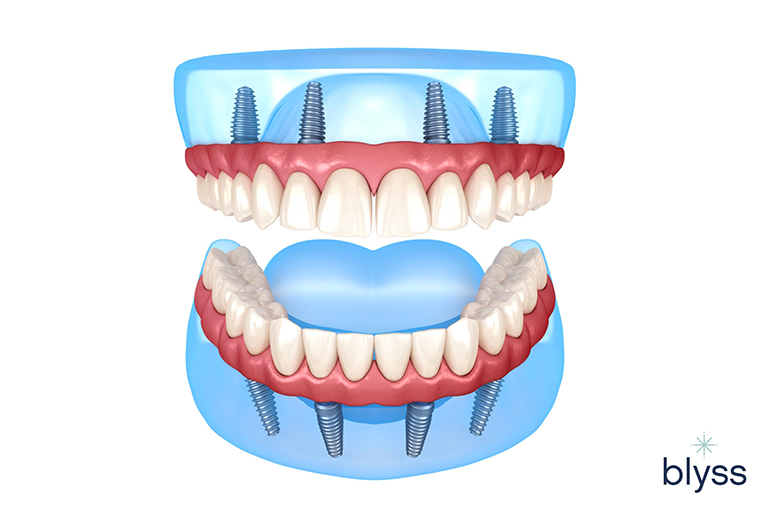The Buzz on Dental Sense
The Buzz on Dental Sense
Blog Article
The 10-Second Trick For Dental Sense
Table of ContentsFacts About Dental Sense RevealedSome Ideas on Dental Sense You Should KnowThe Best Strategy To Use For Dental SenseHow Dental Sense can Save You Time, Stress, and Money.
are medical tools surgically implanted right into the jaw to recover an individual's ability to eat or their look. They provide support for fabricated (phony) teeth, such as crowns, bridges, or dentures. When a tooth is shed because of injury or condition, a person can experience issues such as quick bone loss, defective speech, or adjustments to eating patterns that result in discomfort.Oral dental implant systems are composed of an oral implant body and oral implant abutment and may also include a joint addiction screw. Wisdom tooth cavity. The dental implant body is surgically put in the jawbone instead of the tooth's root. The oral implant joint is generally connected to the implant body by the abutment addiction screw and expands with gums right into the mouth to support the affixed artificial teeth
(https://hearthis.at/matthew-music/set/dental-sense/)Structure of The Dental Implant System choosing dental implants, speak to your oral copyright concerning the potential advantages and risks, and whether you are a prospect for the treatment. Points to consider: Your general wellness is a crucial variable in determining whether you are a great candidate for oral implants, how much time it will certainly take to heal, and the length of time the dental implant may stay in area.
Smoking might influence the recovery process and decrease the long-lasting success of the implant. The healing process for the implant body may take numerous months or longer, throughout which time you commonly have a short-term joint instead of the tooth. the dental implant procedure: Meticulously follow the dental hygiene guidelines offered to you by your oral company.
The Definitive Guide to Dental Sense
Implant failure can result in the demand for an additional procedure to take care of or replace the dental implant system. Recovers the capacity to chew Brings back cosmetic look Aids keep the jawbone from reducing due to bone loss Preserves the wellness of the bordering bone and gums Helps maintain adjacent (nearby) teeth secure Improves lifestyle Damages to surrounding natural teeth during implant positioning Injury to the surrounding cells throughout surgical procedure, such as sinus opening Injury during surgical treatment (for example, crack of surrounding jawbone) Inadequate function, such as really feeling like the teeth do not bite with each other typically A sensation that the tooth is loose or turning in area resulting from a joint screw loosening up Implant body failing (looseness of the dental implant body) due to systemic infection, which might be most likely in patients with uncontrolled diabetes as a result of regional infection in bone and gum tissues sustaining the dental implant body because of postponed recovery, which might be more probable in individuals who smoke Difficulty cleansing the gums around the dental implant, causing poor oral hygiene Unattended periodontal condition Post-surgical tingling because of nerve impingement or damages Constantly notify healthcare service providers and imaging technicians that you have dental implants prior to any magnetic resonance imaging (MRI) or x-ray procedures.
FDA click here for info is not knowledgeable about any kind of adverse events reported for MRI or x-ray procedures with dental implants. Dental implants systems are commonly constructed from products that adhere to worldwide agreement standards of the International Organization for Standardization (ISO) or ASTM International. These standards have details of what makes a safe product.

A dental implant is a structure that replaces a missing tooth. With screw-like gadgets, the cosmetic surgeon inserts a dental implant into the jawbone, and it acts as a support for a synthetic tooth, called a crown.
Not known Incorrect Statements About Dental Sense
Some individuals are not qualified for dental implant surgical treatment. It is for dental surgeons to operate people with: severe illnessuncontrollable metabolic diseasebone or soft cells condition or infectionIf these issues are dealt with, a person can have the surgery. In, oral specialists avoid from running on individuals with: If individuals with any of the above undertake oral implant surgery, there is a greater threat of the implant stopping working.

Dental implant surgical procedure is a tailored procedure. It's not the same for everybody. But the complying with offers a general summary of what you can expect your dental practitioner, dental specialist, periodontist or prosthodontist to do: Put the dental implant operatively. Give you time to recover. Attach the post and final crown, bridge or denture.
Next off, your doctor will meticulously position the oral implant into your jaw. Your cosmetic surgeon will certainly reposition your gums and close the cut with stitches. If your implant is near the front of your mouth, your dental professional will certainly make a short-term tooth for you to put on up until you recover. By doing this, you will not have a void in your smile while you recuperate.
The 7-Minute Rule for Dental Sense
Your copyright can tell you what to expect in your situation. Throughout the recovery stage, your jawbone must fuse to the oral implant. This procedure, called osseointegration, is essential for security and long-term success. This process can take anywhere from 3 to 9 months. In many cases, it may take much longer.
Once your implant heals, your dental expert can attach the abutment (little adapter message) and your last reconstruction (crown, bridge or denture). This normally takes regarding one hour to finish and may need a 2nd minor surgical treatment. You shouldn't feel any type of discomfort throughout your dental implant procedure because your copyright will certainly utilize medicine to numb your periodontals.
Report this page